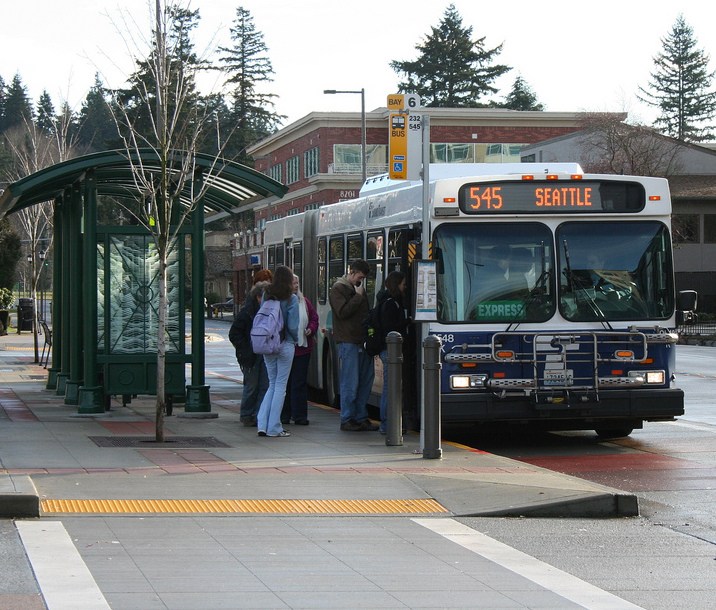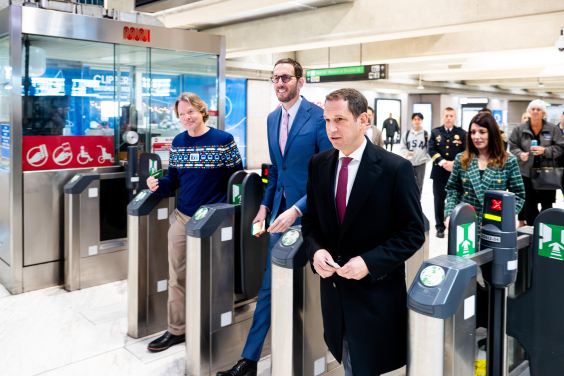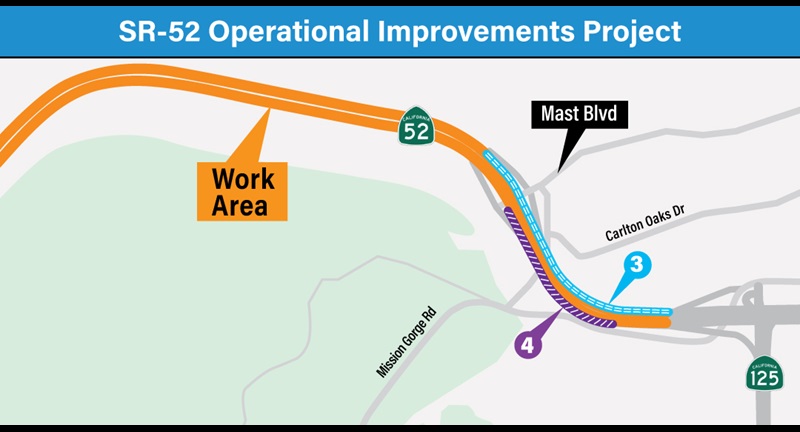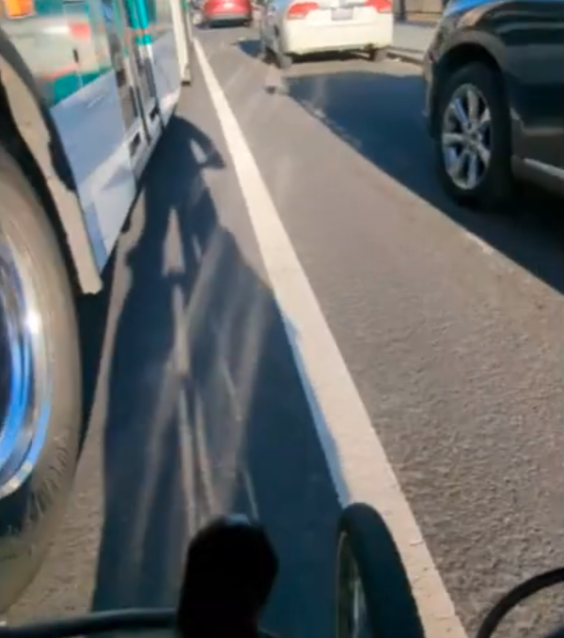Yesterday, during a press availability that was mostly about his plans for the ethnic cleansing of the Gaza Strip, President Donald Trump attacked California High-Speed Rail, the under construction 520+ mile mega-project that will one day connect Sacramento, to the Bay Area, through the Central Valley and Los Angeles, down to Anaheim and San Diego.
He threatened an investigation of the project to search for what he believes is rampant corruption. He offered no proof that such corruption exists.
"Any investigation is going to find we've been spending money wisely. We're buying land, buying trains, and we're working as fast as we can with the money we have," Jim Patrick, a spokesperson for the project, told Streetsblog.
“I can speak first hand to the delays we’ve seen in Fresno," said Fresno Mayor Jerry Dyer, a Republican to an NBC affiliate. “But I also understand this is the first high-speed rail that’s been developed in the United States.” Dyer continued that he is interested in seeing the results of the investigation, but doesn’t think it should impact funding. “I want to see the project finished.”
For those interested, you can see Trump's ramble about high-speed rail here and we’ve transcribed it below for posterity. However, a few notes before you dive in.
- There is no evidence of corruption or kickbacks of funds to state officials from High-Speed Rail allocations.
- There are many highway projects that have (by percentage) gone over budget by more than the initial estimates of High-Speed Rail. Alan Fisher of the "Armchair Urbanist" YouTube channel goes into depth about the many problems of the I-69 project, for example. That project has taken over three decades, has many overruns, doesn’t have a completion date, but has gotten a tiny fraction of the scrutiny leveled at CAHSR.
- CAHSR has not given up on building connections between the Bay Area and Los Angeles (and beyond). The first phase of the project, the one currently under construction, is in the Central Valley, but that is not the only planned portion of the project.
- The High-Speed Rail connection to San Francisco - Caltrain electrification - is already a success. CAHSR funding contributed to the electrification of Caltrain, which connects San Jose and San Francisco.
- Over 50 years, CAHSR is forecast to reduce greenhouse gas emissions by 102 million metric tons of carbon dioxide equivalent. The high-speed rail system also reduces harmful air pollutants, such as particulate matter, carbon monoxide and nitrogen oxide.
- Driving from L.A. to San Francisco takes six hours if there is no traffic and no rest stops. HSR will take less than half that.
- The original estimate for the cost of high-speed rail was $45 billion. It is now $125 billion. It is not "many hundreds of billions of dollars" over budget.
- Most of the increased costs for the project are due to the higher cost of land acquisition, the cost of highway/roadway projects required to build the rail (overpasses, etc.) and inflation due to the delayed timeline (caused in part by political delays.)
- The cost of a flight from Los Angeles to San Francisco is more than $2.
- Streetsblog reached out to the U.S. High Speed Rail Association for help analyzing the president's claim that you could save "hundreds of billions of dollars" by providing limousines for people that wanted to travel between LA and the Bay Area instead of High-Speed Rail.
The association's president, Andy Kunz, helps us do the math. Needless to say, it will not save hundreds of billions of dollars.
"This system will carry as many as 30 million people every year once up and fully operational between San Francisco and Los Angeles," wrote Kunz.
"Try calculating hiring a limousine to carry 1 person from San Fran to LA for 1 trip and see how much that cost is. You could actually get this number today by calling one of the limousine companies in CA and asking them. Then multiply that by 30 million, (then multiply that times 10 trips per year each - so that's 300 million trips per year) and then multiply that by every year for the next 50-100 years and see how much that adds up to! I'm sure it will add up to way more than this train's cost."
The average cost of a limousine trip between the two cities is $2,500. Multiply that by 30 million trips per year and the total cost comes to $75 billion ever year. Needless to say, hundreds of billions of dollars will not be saved if we abandon high-speed rail for limo service.
And here’s the transcript:
I would say this: the people that got all that money, are they kicking it back to the people that gave it from government? No, to me, very, very corrupt. The real question is, how much of a kickback has there been? And one of the things I want to investigate rapidly, because I've never seen anything to this extent.
The train that's being built between Los Angeles and San Francisco is the worst managed project I think I've ever seen. And I've seen some of the worst. Billions and billions, hundreds of billions of dollars, over budget. In fact, I read where you could take every single person that was going to go on the train and get the finest limousine service in the world, and take them back and forth with limousines, and you'd have hundreds of billions of dollars left over.
It is the worst thing, and we're going to start an investigation in that, because it's not possible. I built for a living, and I build on time, on budget, it's impossible that something could cost that much.
And now it's not even going to San Francisco and it's not going to Los Angeles. It's…they made it much shorter, so now it's at little places way away from San Francisco and way away from Los Angeles.
No! We're going to start a big investigation on that, because it's...I've never seen anything like it. Nobody has ever seen anything like it. The worst overruns that there have ever been in the history of our country.
And it wasn't even necessary. I would have said, "You don't buy it. You take an airplane. It cost you $2. It cost you nothing. You take an airplane. But this got started, and if you have to, you drive and drive, they have hundreds of billions of dollars of cost overruns, and it's not even the same project. It's much shorter. It's way outside of San Francisco and way outside of Los Angeles. So we're going to be looking into it.






